Use of Management Accounting Systems for Allocating Product Costs
VerifiedAdded on 2023/05/31
|7
|1303
|247
AI Summary
The essay discusses the use of different management accounting system for calculating the cost of an individual project, service or activity. It explains the usefulness of Activity-Based Costing (ABC) system for taking accurate decisions regarding the product costs. The essay also highlights the areas requiring judgment and limitations in the proposed accounting system.
Contribute Materials
Your contribution can guide someone’s learning journey. Share your
documents today.
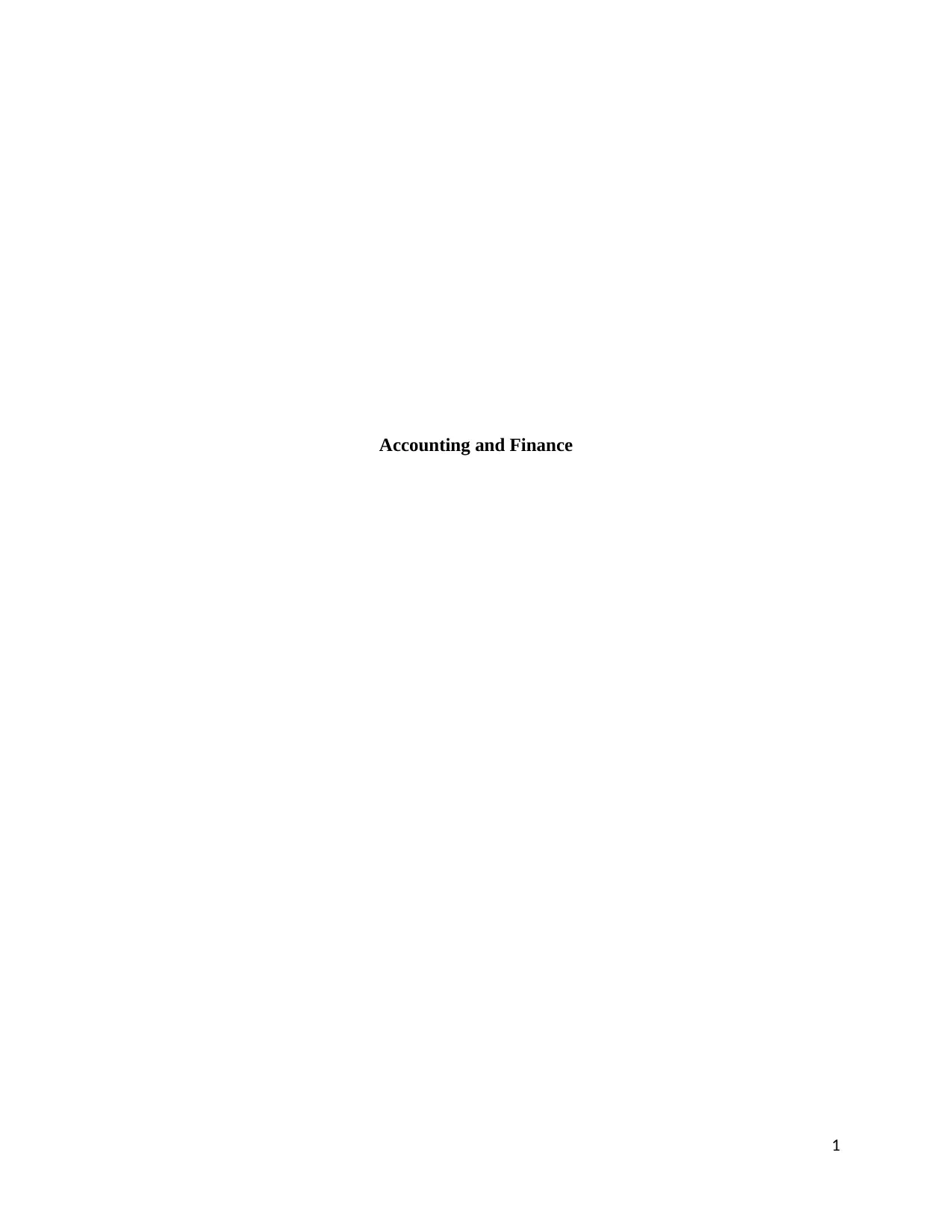
Accounting and Finance
1
1
Secure Best Marks with AI Grader
Need help grading? Try our AI Grader for instant feedback on your assignments.
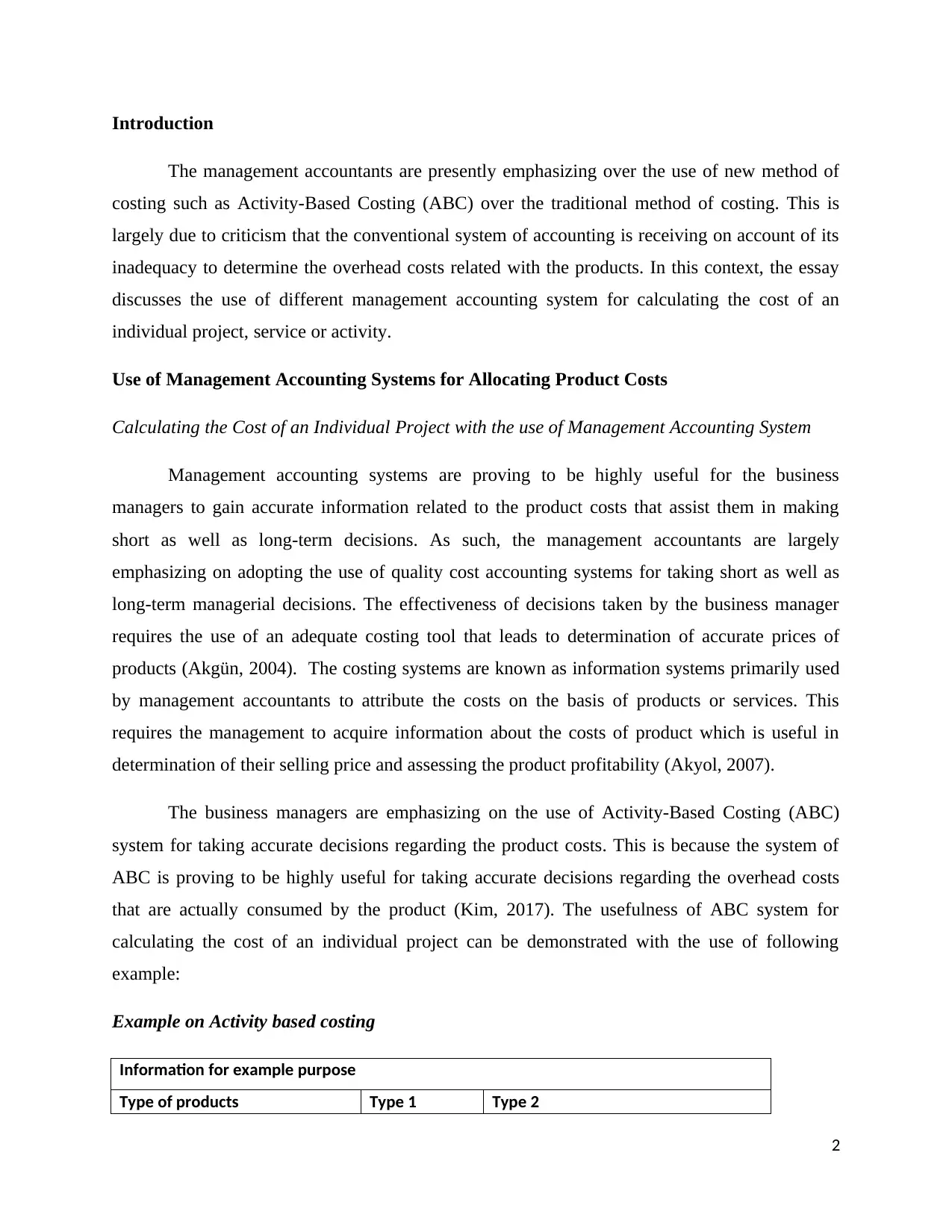
Introduction
The management accountants are presently emphasizing over the use of new method of
costing such as Activity-Based Costing (ABC) over the traditional method of costing. This is
largely due to criticism that the conventional system of accounting is receiving on account of its
inadequacy to determine the overhead costs related with the products. In this context, the essay
discusses the use of different management accounting system for calculating the cost of an
individual project, service or activity.
Use of Management Accounting Systems for Allocating Product Costs
Calculating the Cost of an Individual Project with the use of Management Accounting System
Management accounting systems are proving to be highly useful for the business
managers to gain accurate information related to the product costs that assist them in making
short as well as long-term decisions. As such, the management accountants are largely
emphasizing on adopting the use of quality cost accounting systems for taking short as well as
long-term managerial decisions. The effectiveness of decisions taken by the business manager
requires the use of an adequate costing tool that leads to determination of accurate prices of
products (Akgün, 2004). The costing systems are known as information systems primarily used
by management accountants to attribute the costs on the basis of products or services. This
requires the management to acquire information about the costs of product which is useful in
determination of their selling price and assessing the product profitability (Akyol, 2007).
The business managers are emphasizing on the use of Activity-Based Costing (ABC)
system for taking accurate decisions regarding the product costs. This is because the system of
ABC is proving to be highly useful for taking accurate decisions regarding the overhead costs
that are actually consumed by the product (Kim, 2017). The usefulness of ABC system for
calculating the cost of an individual project can be demonstrated with the use of following
example:
Example on Activity based costing
Information for example purpose
Type of products Type 1 Type 2
2
The management accountants are presently emphasizing over the use of new method of
costing such as Activity-Based Costing (ABC) over the traditional method of costing. This is
largely due to criticism that the conventional system of accounting is receiving on account of its
inadequacy to determine the overhead costs related with the products. In this context, the essay
discusses the use of different management accounting system for calculating the cost of an
individual project, service or activity.
Use of Management Accounting Systems for Allocating Product Costs
Calculating the Cost of an Individual Project with the use of Management Accounting System
Management accounting systems are proving to be highly useful for the business
managers to gain accurate information related to the product costs that assist them in making
short as well as long-term decisions. As such, the management accountants are largely
emphasizing on adopting the use of quality cost accounting systems for taking short as well as
long-term managerial decisions. The effectiveness of decisions taken by the business manager
requires the use of an adequate costing tool that leads to determination of accurate prices of
products (Akgün, 2004). The costing systems are known as information systems primarily used
by management accountants to attribute the costs on the basis of products or services. This
requires the management to acquire information about the costs of product which is useful in
determination of their selling price and assessing the product profitability (Akyol, 2007).
The business managers are emphasizing on the use of Activity-Based Costing (ABC)
system for taking accurate decisions regarding the product costs. This is because the system of
ABC is proving to be highly useful for taking accurate decisions regarding the overhead costs
that are actually consumed by the product (Kim, 2017). The usefulness of ABC system for
calculating the cost of an individual project can be demonstrated with the use of following
example:
Example on Activity based costing
Information for example purpose
Type of products Type 1 Type 2
2
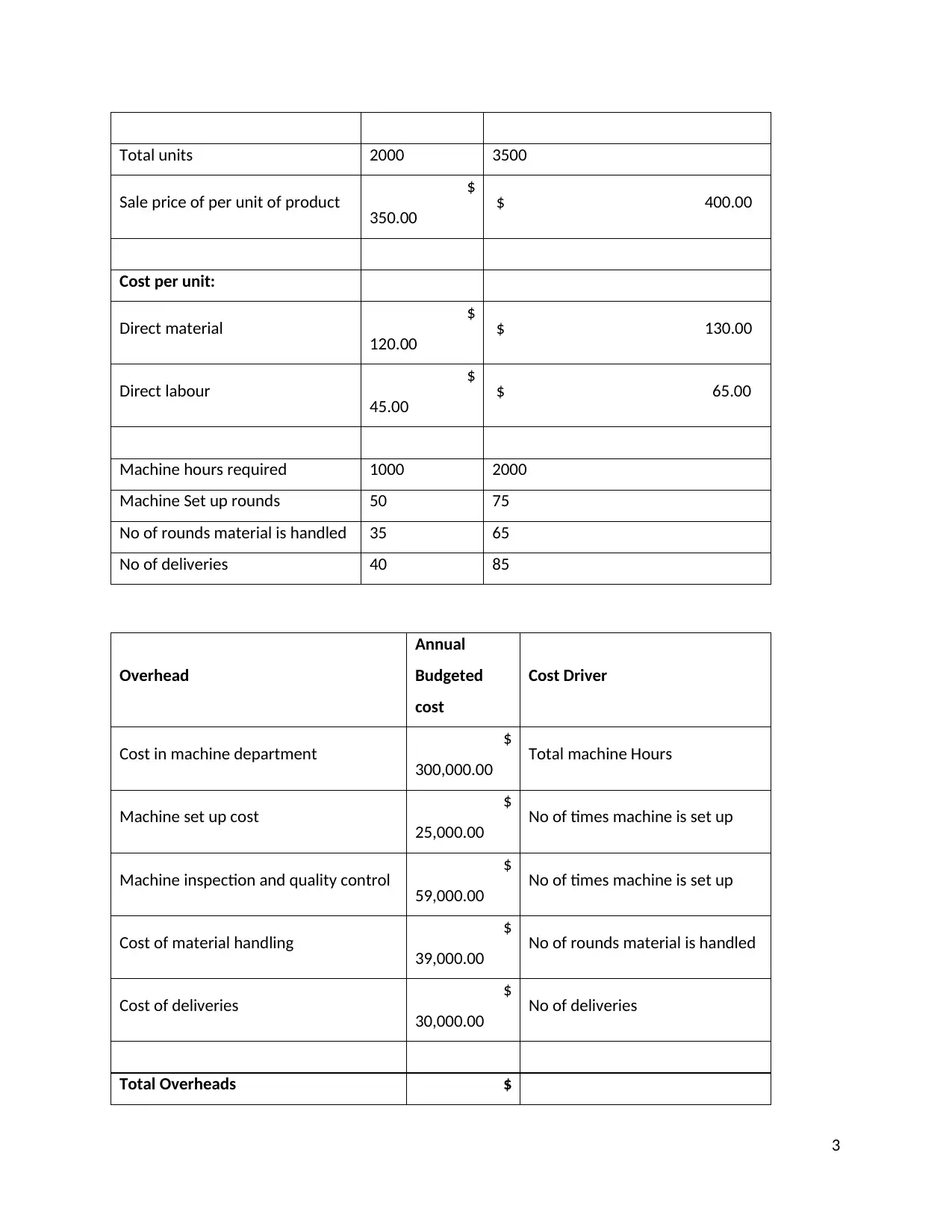
Total units 2000 3500
Sale price of per unit of product $
350.00 $ 400.00
Cost per unit:
Direct material $
120.00 $ 130.00
Direct labour $
45.00 $ 65.00
Machine hours required 1000 2000
Machine Set up rounds 50 75
No of rounds material is handled 35 65
No of deliveries 40 85
Overhead
Annual
Budgeted
cost
Cost Driver
Cost in machine department $
300,000.00 Total machine Hours
Machine set up cost $
25,000.00 No of times machine is set up
Machine inspection and quality control $
59,000.00 No of times machine is set up
Cost of material handling $
39,000.00 No of rounds material is handled
Cost of deliveries $
30,000.00 No of deliveries
Total Overheads $
3
Sale price of per unit of product $
350.00 $ 400.00
Cost per unit:
Direct material $
120.00 $ 130.00
Direct labour $
45.00 $ 65.00
Machine hours required 1000 2000
Machine Set up rounds 50 75
No of rounds material is handled 35 65
No of deliveries 40 85
Overhead
Annual
Budgeted
cost
Cost Driver
Cost in machine department $
300,000.00 Total machine Hours
Machine set up cost $
25,000.00 No of times machine is set up
Machine inspection and quality control $
59,000.00 No of times machine is set up
Cost of material handling $
39,000.00 No of rounds material is handled
Cost of deliveries $
30,000.00 No of deliveries
Total Overheads $
3
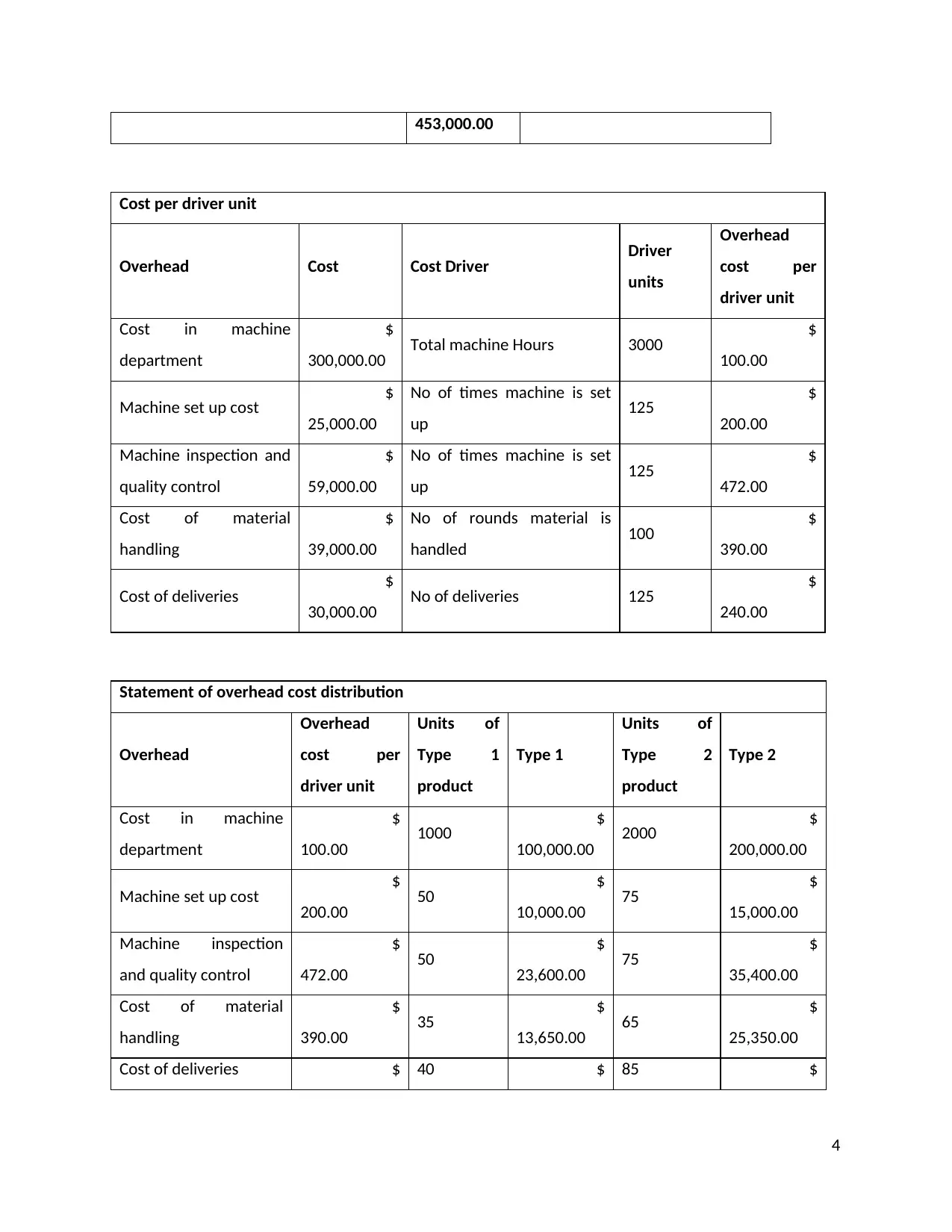
453,000.00
Cost per driver unit
Overhead Cost Cost Driver Driver
units
Overhead
cost per
driver unit
Cost in machine
department
$
300,000.00 Total machine Hours 3000 $
100.00
Machine set up cost $
25,000.00
No of times machine is set
up 125 $
200.00
Machine inspection and
quality control
$
59,000.00
No of times machine is set
up 125 $
472.00
Cost of material
handling
$
39,000.00
No of rounds material is
handled 100 $
390.00
Cost of deliveries $
30,000.00 No of deliveries 125 $
240.00
Statement of overhead cost distribution
Overhead
Overhead
cost per
driver unit
Units of
Type 1
product
Type 1
Units of
Type 2
product
Type 2
Cost in machine
department
$
100.00 1000 $
100,000.00 2000 $
200,000.00
Machine set up cost $
200.00 50 $
10,000.00 75 $
15,000.00
Machine inspection
and quality control
$
472.00 50 $
23,600.00 75 $
35,400.00
Cost of material
handling
$
390.00 35 $
13,650.00 65 $
25,350.00
Cost of deliveries $ 40 $ 85 $
4
Cost per driver unit
Overhead Cost Cost Driver Driver
units
Overhead
cost per
driver unit
Cost in machine
department
$
300,000.00 Total machine Hours 3000 $
100.00
Machine set up cost $
25,000.00
No of times machine is set
up 125 $
200.00
Machine inspection and
quality control
$
59,000.00
No of times machine is set
up 125 $
472.00
Cost of material
handling
$
39,000.00
No of rounds material is
handled 100 $
390.00
Cost of deliveries $
30,000.00 No of deliveries 125 $
240.00
Statement of overhead cost distribution
Overhead
Overhead
cost per
driver unit
Units of
Type 1
product
Type 1
Units of
Type 2
product
Type 2
Cost in machine
department
$
100.00 1000 $
100,000.00 2000 $
200,000.00
Machine set up cost $
200.00 50 $
10,000.00 75 $
15,000.00
Machine inspection
and quality control
$
472.00 50 $
23,600.00 75 $
35,400.00
Cost of material
handling
$
390.00 35 $
13,650.00 65 $
25,350.00
Cost of deliveries $ 40 $ 85 $
4
Secure Best Marks with AI Grader
Need help grading? Try our AI Grader for instant feedback on your assignments.
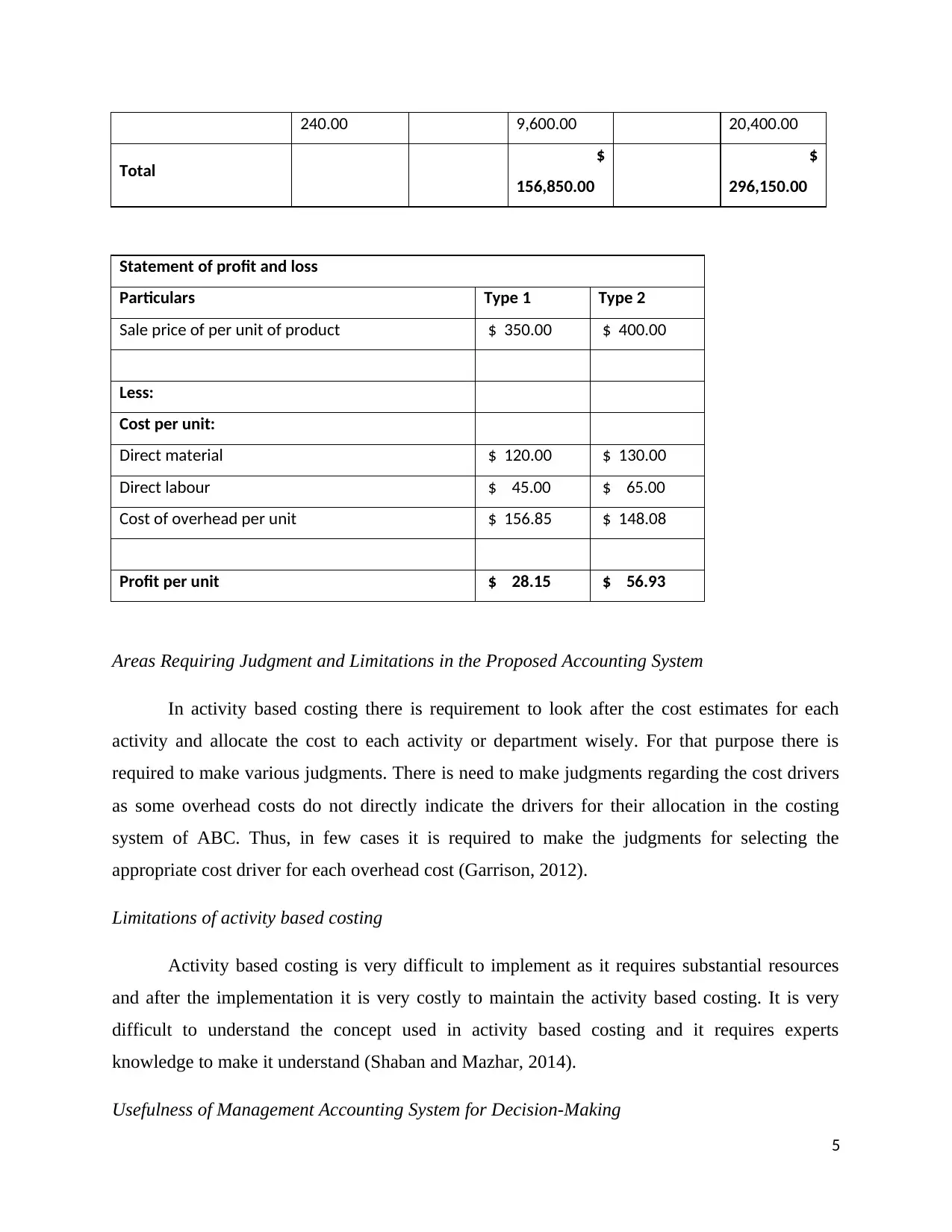
240.00 9,600.00 20,400.00
Total $
156,850.00
$
296,150.00
Statement of profit and loss
Particulars Type 1 Type 2
Sale price of per unit of product $ 350.00 $ 400.00
Less:
Cost per unit:
Direct material $ 120.00 $ 130.00
Direct labour $ 45.00 $ 65.00
Cost of overhead per unit $ 156.85 $ 148.08
Profit per unit $ 28.15 $ 56.93
Areas Requiring Judgment and Limitations in the Proposed Accounting System
In activity based costing there is requirement to look after the cost estimates for each
activity and allocate the cost to each activity or department wisely. For that purpose there is
required to make various judgments. There is need to make judgments regarding the cost drivers
as some overhead costs do not directly indicate the drivers for their allocation in the costing
system of ABC. Thus, in few cases it is required to make the judgments for selecting the
appropriate cost driver for each overhead cost (Garrison, 2012).
Limitations of activity based costing
Activity based costing is very difficult to implement as it requires substantial resources
and after the implementation it is very costly to maintain the activity based costing. It is very
difficult to understand the concept used in activity based costing and it requires experts
knowledge to make it understand (Shaban and Mazhar, 2014).
Usefulness of Management Accounting System for Decision-Making
5
Total $
156,850.00
$
296,150.00
Statement of profit and loss
Particulars Type 1 Type 2
Sale price of per unit of product $ 350.00 $ 400.00
Less:
Cost per unit:
Direct material $ 120.00 $ 130.00
Direct labour $ 45.00 $ 65.00
Cost of overhead per unit $ 156.85 $ 148.08
Profit per unit $ 28.15 $ 56.93
Areas Requiring Judgment and Limitations in the Proposed Accounting System
In activity based costing there is requirement to look after the cost estimates for each
activity and allocate the cost to each activity or department wisely. For that purpose there is
required to make various judgments. There is need to make judgments regarding the cost drivers
as some overhead costs do not directly indicate the drivers for their allocation in the costing
system of ABC. Thus, in few cases it is required to make the judgments for selecting the
appropriate cost driver for each overhead cost (Garrison, 2012).
Limitations of activity based costing
Activity based costing is very difficult to implement as it requires substantial resources
and after the implementation it is very costly to maintain the activity based costing. It is very
difficult to understand the concept used in activity based costing and it requires experts
knowledge to make it understand (Shaban and Mazhar, 2014).
Usefulness of Management Accounting System for Decision-Making
5
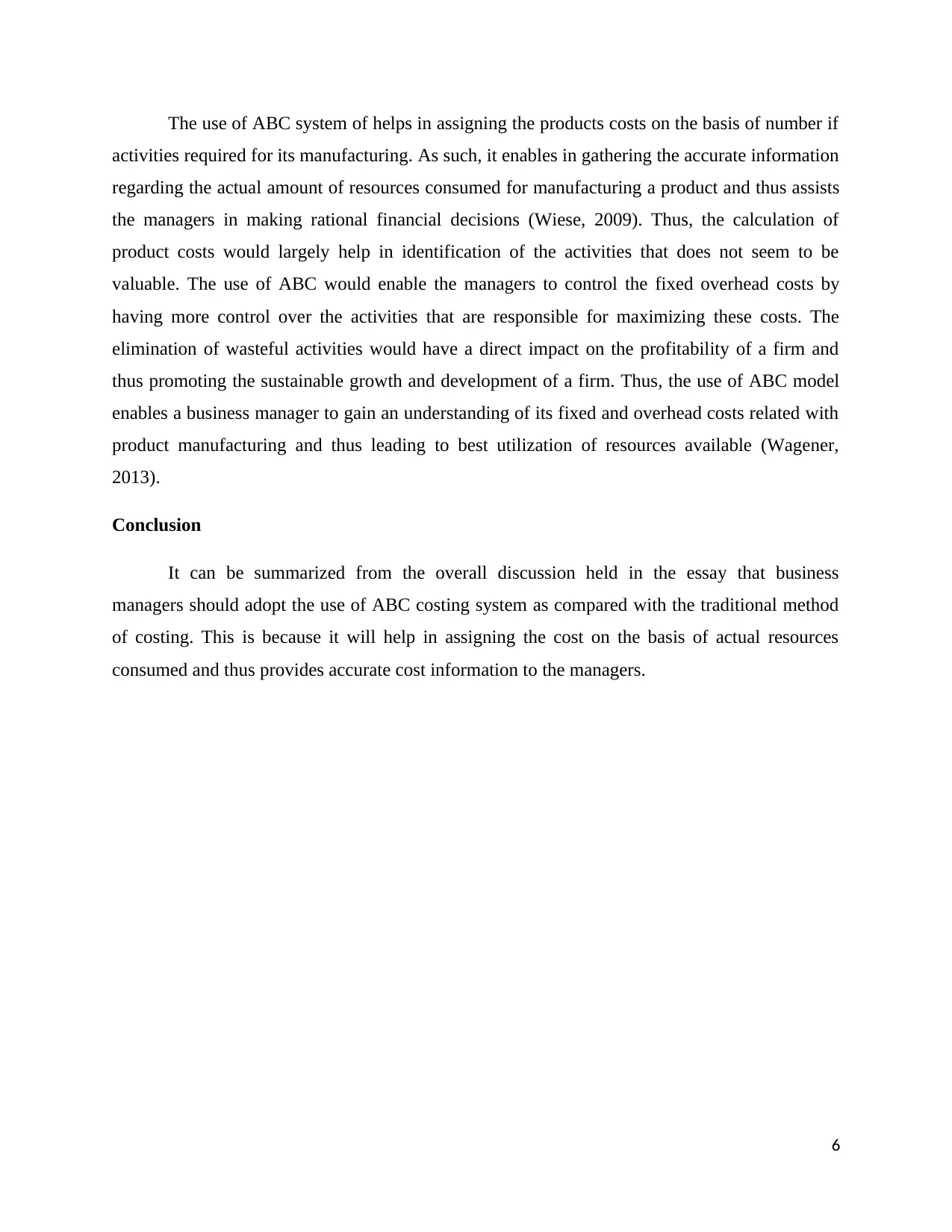
The use of ABC system of helps in assigning the products costs on the basis of number if
activities required for its manufacturing. As such, it enables in gathering the accurate information
regarding the actual amount of resources consumed for manufacturing a product and thus assists
the managers in making rational financial decisions (Wiese, 2009). Thus, the calculation of
product costs would largely help in identification of the activities that does not seem to be
valuable. The use of ABC would enable the managers to control the fixed overhead costs by
having more control over the activities that are responsible for maximizing these costs. The
elimination of wasteful activities would have a direct impact on the profitability of a firm and
thus promoting the sustainable growth and development of a firm. Thus, the use of ABC model
enables a business manager to gain an understanding of its fixed and overhead costs related with
product manufacturing and thus leading to best utilization of resources available (Wagener,
2013).
Conclusion
It can be summarized from the overall discussion held in the essay that business
managers should adopt the use of ABC costing system as compared with the traditional method
of costing. This is because it will help in assigning the cost on the basis of actual resources
consumed and thus provides accurate cost information to the managers.
6
activities required for its manufacturing. As such, it enables in gathering the accurate information
regarding the actual amount of resources consumed for manufacturing a product and thus assists
the managers in making rational financial decisions (Wiese, 2009). Thus, the calculation of
product costs would largely help in identification of the activities that does not seem to be
valuable. The use of ABC would enable the managers to control the fixed overhead costs by
having more control over the activities that are responsible for maximizing these costs. The
elimination of wasteful activities would have a direct impact on the profitability of a firm and
thus promoting the sustainable growth and development of a firm. Thus, the use of ABC model
enables a business manager to gain an understanding of its fixed and overhead costs related with
product manufacturing and thus leading to best utilization of resources available (Wagener,
2013).
Conclusion
It can be summarized from the overall discussion held in the essay that business
managers should adopt the use of ABC costing system as compared with the traditional method
of costing. This is because it will help in assigning the cost on the basis of actual resources
consumed and thus provides accurate cost information to the managers.
6
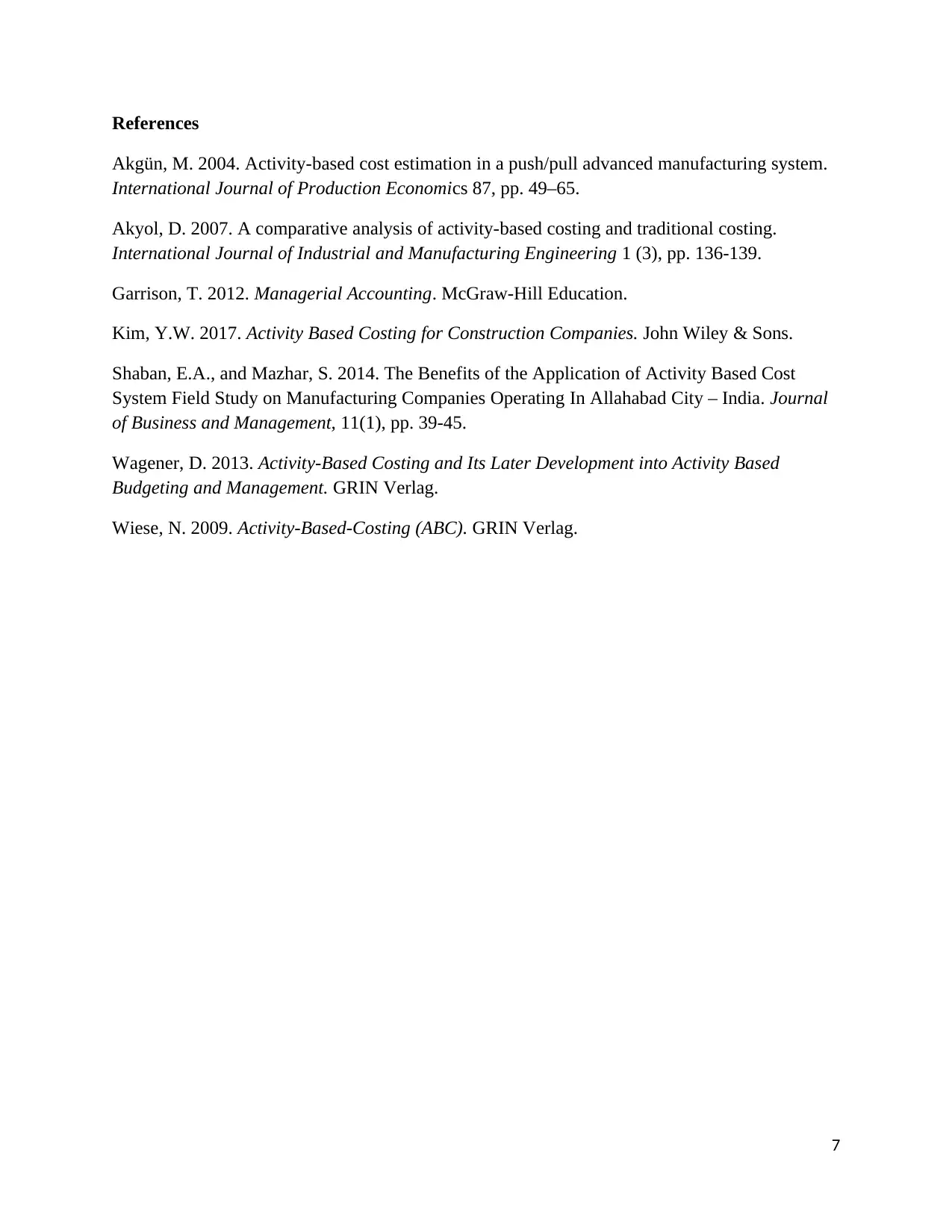
References
Akgün, M. 2004. Activity-based cost estimation in a push/pull advanced manufacturing system.
International Journal of Production Economics 87, pp. 49–65.
Akyol, D. 2007. A comparative analysis of activity-based costing and traditional costing.
International Journal of Industrial and Manufacturing Engineering 1 (3), pp. 136-139.
Garrison, T. 2012. Managerial Accounting. McGraw-Hill Education.
Kim, Y.W. 2017. Activity Based Costing for Construction Companies. John Wiley & Sons.
Shaban, E.A., and Mazhar, S. 2014. The Benefits of the Application of Activity Based Cost
System Field Study on Manufacturing Companies Operating In Allahabad City – India. Journal
of Business and Management, 11(1), pp. 39-45.
Wagener, D. 2013. Activity-Based Costing and Its Later Development into Activity Based
Budgeting and Management. GRIN Verlag.
Wiese, N. 2009. Activity-Based-Costing (ABC). GRIN Verlag.
7
Akgün, M. 2004. Activity-based cost estimation in a push/pull advanced manufacturing system.
International Journal of Production Economics 87, pp. 49–65.
Akyol, D. 2007. A comparative analysis of activity-based costing and traditional costing.
International Journal of Industrial and Manufacturing Engineering 1 (3), pp. 136-139.
Garrison, T. 2012. Managerial Accounting. McGraw-Hill Education.
Kim, Y.W. 2017. Activity Based Costing for Construction Companies. John Wiley & Sons.
Shaban, E.A., and Mazhar, S. 2014. The Benefits of the Application of Activity Based Cost
System Field Study on Manufacturing Companies Operating In Allahabad City – India. Journal
of Business and Management, 11(1), pp. 39-45.
Wagener, D. 2013. Activity-Based Costing and Its Later Development into Activity Based
Budgeting and Management. GRIN Verlag.
Wiese, N. 2009. Activity-Based-Costing (ABC). GRIN Verlag.
7
1 out of 7
Related Documents
Your All-in-One AI-Powered Toolkit for Academic Success.
+13062052269
info@desklib.com
Available 24*7 on WhatsApp / Email
![[object Object]](/_next/static/media/star-bottom.7253800d.svg)
Unlock your academic potential
© 2024 | Zucol Services PVT LTD | All rights reserved.





